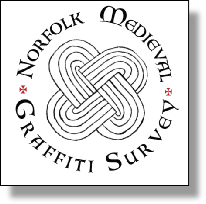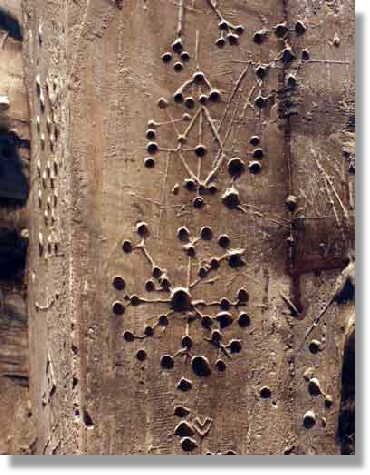









A common find in many churches, both those with and without graffiti inscriptions, are multiple dot patterns. In some cases the dots are clearly just being used as the terminus points for other inscriptions, such as crosses or stars, but in others their function is less obvious. A lot of these dot patterns have been deeply inscribed into the surface of the stone or plaster, and they do tend to be found in groups.
In a number of cases, and at a number of sites, the dots appear to follow numerical values, being found in generally uneven numbers, and commonly in groups of three, five, seven and nine. Certain uneven numbers had considerable significance in the medieval church, such as the Trinity and the seven sacraments, and numbers were also regarded as powerful within aspects of medieval magic.
It has been suggested that the holes or dots are the result of local and regional practice of folk medicine. In some areas, particularly in France and Spain, it was until recently believed that the stone or plaster of the church, ground to a fine powder and mixed with wine, was an effective cure for many illnesses and diseases. This may well have been the case in England also, although there is no direct evidence to support the idea. Indeed, the significance of these dot patterns may contain elements of any or all of the above, but it is certainly still a matter of some debate.











